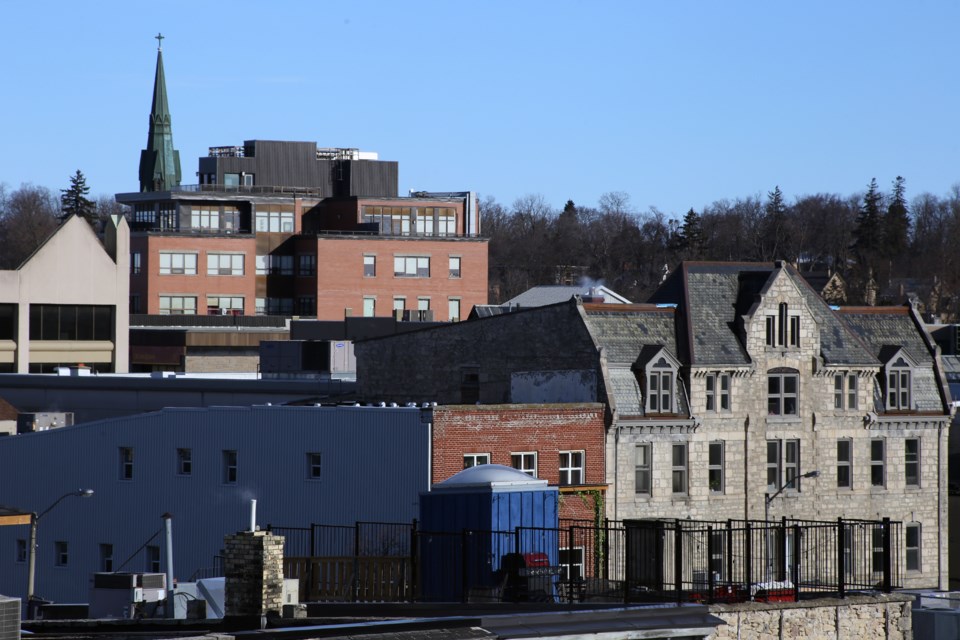Some time ago, I wrote in this space about the two Guelphs: the Guelph that is the bright and shiny example of our time and the other Guelph that gets ignored as we wallow in our own awesomeness.
The two Guelphs were on display again at this week’s city council meetings. While council and the public were eager to talk about closing downtown streets to create the world’s biggest patio, or something, there were delegates waiting in the wings to describe how people living rough in Guelph had gone three months without access to clean water, or public washroom facilities.
We’ll get to that, but first we have to confront the friction between Guelph’s progressive idealism and the practical realities of running a city like Guelph.
Monday’s planning meeting presented the community engagement and growth vision and principles for the Shaping Guelph Growth Management Strategy. The key findings were not terribly surprising: more density, more open spaces, more transit, more active transportation and environmental protections.
The problem is that these principles are the ones we like to tout while talking broadly about development. But when it comes to development on the singular level, we throw our vaunted principles out the door if it means upsetting our immediate ecosystem.
Take the proposed high-density development at 361 Whitelaw Rd. It checked all the boxes by being close to amenities, having easy access to transit routes, and featuring a fairly large portion of open space, but it was voted down due largely to concerns that it was too big, which I thought was the point of high density.
That matter is now going to the Local Planning Appeal Tribunal, or some other kind of legal action that’s being discussed in-camera at council, so not only has Guelph lost 700 units in a town with effectively no vacancy, we’re going to lose hundreds of thousands of dollars in legal costs. What’s the opposite of a win-win?
The plan also mentions how people surveyed want more density downtown, and I’m forced to wonder if these are the same people that come to council in a tizzy when their view of the Basilica of Our Lady is threated. I hate to say it, but we’re not going to build more density downtown unless someone’s view of the church on the hill is ruined.
But it’s not just views but vision I’m skeptical about. Concerns about how wide a net the city’s engagement is casting are valid because it seems like people are coming to Guelph to live out the suburban dream that’s either impossible or unaffordable closer to the GTA. Meanwhile, people in Guelph think they’re coming here for “complete communities” and “Guelphiness”.
Do we have competing visions for the city, one that city hall is branding as official, and another that is being sold to people by developers and realtors?
Mayor Cam Guthrie seemed aware of the disparity when he said that there seems to be a great deal of unity around the need to preserve and create greenspace, but at the same time, everyone wants their single detached home and their own yard.
But the growth plan, to a certain extent, is about how Guelph wants to be seen by people outside our borders. It’s purpose is to lay down the means and methods by which we’ll grow over the next 20 years, and that growth will be from people moving to Guelph from other places who need to know how they’ll fit in to the community. But what about the people already here?
As mentioned above, it seemed a great surprise to many among council and staff to learn that people are still living rough despite the pandemic. As if the reasons why people live rough would change depending on the greater societal circumstances.
But it’s par for the course, because council also voted to restart fares for Guelph Transit in July, while opening the buses to allow for more than 10 passengers at a time. Why is it safe to cram people on a bus again with mandatory masks, but it’s not safe to open City facilities as cooling centres after three heat waves in quick succession?
Look, I’m sympathetic to the city’s management because there’s no greater enemy to good planning than what’s unprecedented, but it seems like we’re sliding easily into old patterns. One delegate at Monday’s meeting said that we should be undertaking planning now using the lessons we’ve learned combatting COVID-19, and perhaps we should.
Still, it’s probably too soon to know what those lessons are exactly, but at the same time we still seem terribly unaware of the friction in our own community.
Before planning for the future, we need to understand that there are some pretty big differences in terms of expectations, and those differences aren’t often expressed in staff reports. In the end, a road map doesn’t matter if we don’t all agree that we’re going to the same place.
